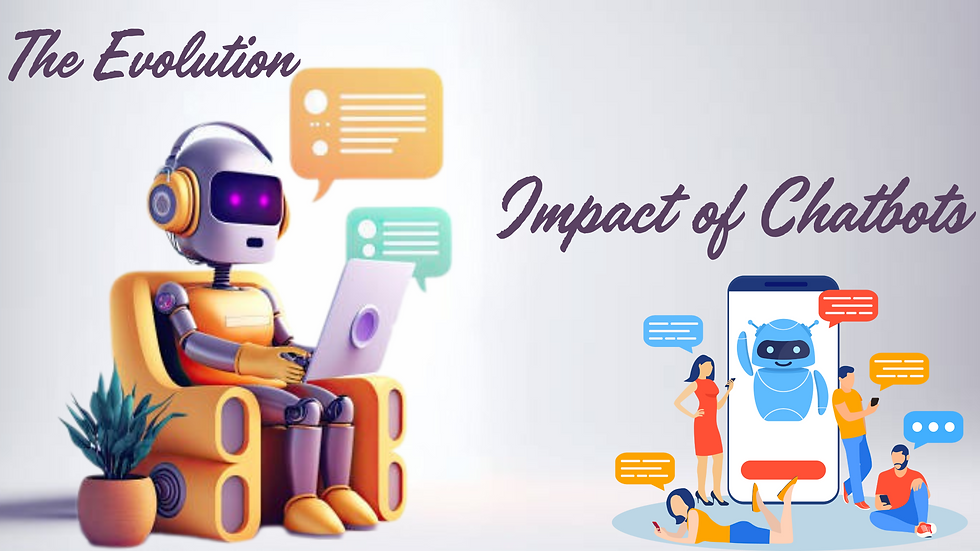The Evolution and Impact of Chatbots
- A.I. Kimiya Innocorn

- Jan 7
- 2 min read
Updated: Aug 13

In the ever-evolving landscape of technology, chatbots have emerged as transformative tools that redefine how we interact with digital systems. These AI-driven applications, designed to simulate human conversation, have rapidly become integral to various sectors, from customer service to healthcare.
What is a Chatbot?
At its core, a Chatbot is a software application powered by artificial intelligence (AI) that engages in text or voice-based conversations with users. It can operate through messaging apps, websites, or voice assistants, utilizing natural language processing (NLP) to understand and respond to user inputs. The simplicity of chatbots belies their complexity; behind the scenes, they leverage sophisticated algorithms and vast data to provide relevant and accurate responses.
Historical Context
The concept of chatbots dates back to the 1960s, with ELIZA, a pioneering program that mimicked human conversation through simple pattern matching. Over the decades, advancements in AI and machine learning have significantly enhanced chatbot capabilities. Modern chatbots, such as GPT-4 and beyond, utilize deep learning techniques to generate more nuanced and contextually appropriate responses, reflecting the rapid progress in computational linguistics and AI.
Applications and Benefits
Chatbots have found applications across diverse fields. In customer service, they handle routine inquiries, streamline support processes, and provide 24/7 assistance, improving efficiency and customer satisfaction. E-commerce platforms use chatbots to assist with product recommendations, order tracking, and post-purchase support, driving sales and enhancing the shopping experience.
In healthcare, chatbots offer symptom checking, mental health support, and appointment scheduling, expanding access to medical advice and reducing the burden on healthcare professionals. Educational institutions leverage chatbots for tutoring and administrative tasks, while financial services use them for transaction monitoring and fraud detection.
The benefits of chatbots extend beyond operational efficiency. They provide consistent and accurate responses, minimize human error, and offer a scalable solution for handling high volumes of interactions. Additionally, chatbots can personalize user experiences by analyzing past interactions and tailoring responses accordingly.
Challenges and Future Prospects
Despite their advantages, chatbots face challenges. Ensuring they understand and respond accurately to diverse user inputs remains a significant hurdle. Moreover, there are concerns about privacy and data security, as chatbots often handle sensitive information.
Looking ahead, the future of chatbots appears promising. Continued advancements in AI, particularly in NLP and machine learning, are expected to enhance their capabilities further. Chatbots are likely to become more intuitive, context-aware, and integrated into various aspects of daily life, offering increasingly sophisticated interactions and support. Kimiya.ai




Comments